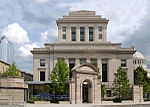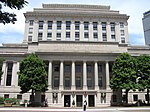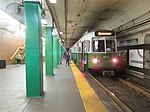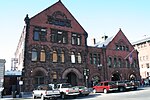Berklee College of Music
Berklee College of Music is a private music college in Boston, Massachusetts. It is the largest independent college of contemporary music in the world. Known for the study of jazz and modern American music, it also offers college-level courses in a wide range of contemporary and historic styles, including rock, hip hop, reggae, salsa, heavy metal and bluegrass. Berklee alumni have won 310 Grammy Awards, more than any other college, and 108 Latin Grammy Awards. Other notable accolades for its alumni include 34 Emmy Awards, 7 Tony Awards, 8 Academy Awards, and 3 Saturn Awards. Since 2012, Berklee College of Music has also operated a campus in Valencia, Spain. In December 2015, Berklee College of Music and the Boston Conservatory agreed to a merger. The combined institution is known as Berklee, with the conservatory becoming The Boston Conservatory at Berklee.
Excerpt from the Wikipedia article Berklee College of Music (License: CC BY-SA 3.0, Authors).Berklee College of Music
Massachusetts Avenue, Boston Fenway / Kenmore
Geographical coordinates (GPS) Address Nearby Places Show on map
Geographical coordinates (GPS)
| Latitude | Longitude |
|---|---|
| N 42.346388888889 ° | E -71.086944444444 ° |
Address
Berklee College of Music
Massachusetts Avenue 160
02215 Boston, Fenway / Kenmore
Massachusetts, United States
Open on Google Maps







